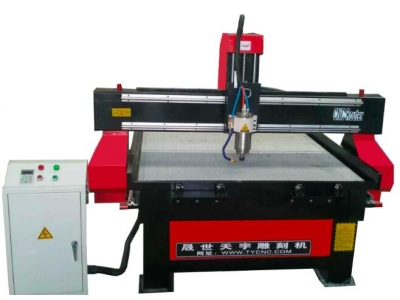一、铝材怎么处理工艺?
常用的铝材表面处理工艺有:阳极氧化、电解着色、电泳涂漆、粉末喷涂、氟碳漆喷涂、仿木纹转印、拉丝处理,亚光处理、染色处理等
二、铝材开料加工中心
欢迎来到我们的博客!今天我们将要为您介绍铝材开料加工中心,它在现今工业领域中扮演着重要的角色。铝材开料加工中心是指为了满足客户的各种需求,使用先进技术和设备对铝材进行精确切割和加工的一种工作中心。它可以帮助企业实现铝材加工的高效率和高精度,满足市场对深加工铝材产品的需求。
铝材的优势和应用领域
首先,我们先来了解一下铝材本身的优势。铝材具有重量轻、耐用、可回收、导热性好等特点,因此广泛应用于各个行业。它被广泛应用于汽车、航空航天、建筑、家居、电子、电力等领域。在汽车行业中,铝合金经常用于车身、发动机和底盘构件的制造,以提高汽车的燃油经济性和安全性能。在建筑行业中,铝材作为阳台、门窗、幕墙等材料的选择,不仅美观耐用,还能有效降低建筑物的能耗。此外,在电子和电力行业,铝材的导热特性使其成为制造散热器和导电线材的理想选择。
铝材开料加工中心的优势
铝材开料加工中心相比传统的手工加工具有很多优势。首先,它使用先进的数控设备,可以根据客户的需求进行精确的切割和加工,保证产品的尺寸精度和加工质量。其次,铝材开料加工中心具有高效率的加工速度,可以大大缩短生产周期,并减少人工成本。此外,铝材开料加工中心还具有自动化操作和无人值守的特点,无需人力干预即可完成加工流程,提高生产效率和稳定性。
铝材开料加工中心的工作原理
铝材开料加工中心的工作原理相对简单。首先,将需要加工的铝材放置在加工台上,通过数控设备控制加工刀具的运动轨迹和加工速度,对铝材进行切割和加工。在切割和加工过程中,数控设备可以根据预定的程序控制刀具的移动和切削力度,从而实现精确的加工效果。一旦加工完成,铝材开料加工中心还可以自动进行下一道工序的加工,提高生产效率。
铝材开料加工中心的应用案例
铝材开料加工中心在各个行业中都有广泛的应用。以汽车行业为例,铝材开料加工中心可以用于汽车车身和底盘的加工,可以根据客户的需求切割和加工各种形状和尺寸的铝材板材。在建筑行业中,铝材开料加工中心可以用于制作门窗、幕墙等铝材制品,可根据设计图纸进行精确的切割和加工,保证产品的质量和安装的精准度。
铝材开料加工中心的发展趋势
随着工业技术的不断进步,铝材开料加工中心也在不断发展和演变。未来,我们可以预见以下几个发展趋势。首先,数控设备的智能化程度将进一步提高,加工效率和精度将得到进一步提升。其次,铝材开料加工中心将更加注重绿色环保和可持续发展,推动节能减排和资源循环利用。此外,与人工智能和大数据技术的结合将为铝材开料加工中心带来更多创新和发展机遇。
总之,铝材开料加工中心在现代工业生产中扮演着举足轻重的角色。它的高效率、高精度和自动化特点使其成为各行业中不可或缺的加工工具。我们相信,随着技术的不断进步和创新,铝材开料加工中心将继续发挥更大的作用,推动工业的发展和进步。
htmlWelcome to our blog! Today we will introduce you to the aluminum profile processing center, which plays an important role in the modern industrial field. The aluminum profile processing center is a work center that uses advanced technology and equipment to accurately cut and process aluminum profiles to meet various customer needs. It can help companies achieve high efficiency and high precision in aluminum processing, meeting the market demand for deep-processed aluminum products.
Advantages and Application Fields of Aluminum Profiles
First of all, let's understand the advantages of aluminum profiles themselves. Aluminum profiles are lightweight, durable, recyclable, and have good thermal conductivity, so they are widely used in various industries. They are widely used in the automotive, aerospace, construction, home, electronics, and power industries. In the automotive industry, aluminum alloys are often used in the manufacturing of car bodies, engines, and chassis components to improve fuel economy and safety performance. In the construction industry, aluminum profiles are chosen as materials for balconies, doors, windows, curtain walls, etc., not only because they are aesthetically pleasing and durable, but also because they can effectively reduce the energy consumption of buildings. In addition, in the electronics and power industries, the thermal conductivity of aluminum profiles makes them an ideal choice for manufacturing heat sinks and conductive wires.
Advantages of Aluminum Profile Processing Center
The aluminum profile processing center has many advantages compared with traditional manual processing. First, it uses advanced CNC equipment to accurately cut and process aluminum profiles according to customer needs, ensuring product dimensional accuracy and processing quality. Secondly, the aluminum profile processing center has a high processing speed, which can greatly shorten the production cycle and reduce labor costs. In addition, the aluminum profile processing center features automated operation and unmanned operation, completing the processing process without human intervention, thereby improving production efficiency and stability.
Working Principle of Aluminum Profile Processing Center
The working principle of the aluminum profile processing center is relatively simple. First, place the aluminum profile to be processed on the processing table, control the movement trajectory and processing speed of the cutting tools through CNC equipment, and cut and process the aluminum profile. During the cutting and processing process, the CNC equipment can control the movement and cutting force of the tool based on a predetermined program, thereby achieving precise processing results. Once the processing is completed, the aluminum profile processing center can automatically proceed to the next process, improving production efficiency.
Application Cases of Aluminum Profile Processing Center
The aluminum profile processing center has wide applications in various industries. Taking the automotive industry as an example, the aluminum profile processing center can be used for the processing of car bodies and chassis, cutting and processing various shapes and sizes of aluminum sheets according to customer needs. In the construction industry, the aluminum profile processing center can be used to manufacture aluminum products such as doors, windows, and curtain walls, accurately cutting and processing them according to design drawings to ensure product quality and installation precision.
Development Trends of Aluminum Profile Processing Center
With the continuous advancement of industrial technology, the aluminum profile processing center is also constantly developing and evolving. In the future, we can foresee the following development trends. Firstly, the intelligent level of CNC equipment will be further improved, and the processing efficiency and accuracy will be further enhanced. Secondly, the aluminum profile processing center will pay more attention to green and sustainable development, promoting energy conservation, emission reduction, and resource recycling. In addition, the integration of artificial intelligence and big data technology will bring more innovation and development opportunities to the aluminum profile processing center.
In conclusion, the aluminum profile processing center plays a crucial role in modern industrial production. Its high efficiency, high precision, and automation characteristics make it an indispensable processing tool in various industries. We believe that with the continuous progress and innovation in technology, the aluminum profile processing center will continue to play a greater role in promoting industrial development and progress.
三、三轴加工中心有粉尘吗?
数控铣床有粉尘,师傅带口罩的原因,是防止粉尘吸入造成人体伤害。在数控铣床加工中会出现各种特殊的零件加工如:铸件,铜件,铝件,石墨件等,由于产品的特殊要求不能采用切削液冷却和加工时产生的粉尘无切削液稀释处理,为了防止特殊产品加工时粉尘吸入而造成人体伤害,所以数控铣床师傅必须带口罩进行防护处理
四、加工中心怎样安排工艺?
工艺这东西我也不好怎么说,我不知道你说的整个工艺还是指CNC这一道,说下整个和吧,简单说下吧,首先你要看懂产品图,然后你要分析你要用到的材料,要做什么处理,比如“切割-碱洗-铣钻-CNC-冲压-去油-包装等等,你要用到哪些,编排下怎么做又方便又节省成本,在做之前先做个DFMEA,为一系统化的分析技术,用以评估某一可能缺点的发生机率,及其发生后造成的影响。而且针对高风险( RPN,Risk Priority Number )项目,事先评估其制程能力,方能订定适当的制程管制。如果你说的只CNC这一道艺,哪只是加工方法跟夹具问题。如果是要学整套的,哪就是工程方面的知识了你可以找工程方面的书籍如果只是CNC方面的问题,我要理解你既然编程不是问题,哪就是产品如何的加工和装夹了,我想在制造工艺学这类书籍里应该有你要的上面只是个人愚见
五、铝材加工中心主要用于什么?
铝型材加工中心的特点
1、纵向行程大 为适应铝型材细长类零件的特点,铝型材加工中心工作台面多为窄长形状。宽度不超过500mm;长度6500mm至7000mm,以适应典型的6米型材加工。工作台面上标配气动夹具和定位靠板,便于工件定位、夹紧。 铝型材加工中心结构布局有龙门式、动柱式、动梁式三种,体现在机床刚性、运行平稳、操作方便等性能指标上三种布局各有优缺点。 配有A轴(绕X轴旋转)的加工中心一次装夹可完成铝型材三个面的加工。
2、主轴转速高 通用加工中心主轴最高转速一般在8000rpm以下;而铝型材加工中心主轴最高转速要达到或超过18000rpm。由于转速高,一般采用集成式永磁同步电主轴,将刀具夹持、吹气清洁、循环水冷却等功能集成在一体。 冷却液系统分浇注冷却和喷雾冷却两种形式。后者属于较先进的准干式切削和微量润滑系统(MQL)概念,冷却润滑效率高,冷却液消耗少,尤其适合铝型材加工。
六、石材粉尘处理设备工程:如何有效解决石材加工粉尘污染
石材粉尘处理设备工程
近年来,随着建筑业的蓬勃发展,石材加工行业也蓬勃发展。然而,石材加工过程中产生的粉尘污染却成为了环境治理的一大难题。为了解决这一问题,石材粉尘处理设备工程应运而生,成为石材加工企业的必备装备。
石材加工粉尘的处理一直是石材企业面临的难题。石材的切割、打磨、抛光等加工过程都会产生大量的粉尘,严重影响生产环境和员工健康。因此,引入专业的石材粉尘处理设备工程成为了石材企业的当务之急。
石材粉尘处理设备工程的核心技术
石材粉尘处理设备工程的核心技术主要包括粉尘收集、粉尘过滤和粉尘处理。通过高效的粉尘收集装置,将产生的粉尘迅速收集起来;通过精密的粉尘过滤系统,将粉尘中的杂质和有害物质过滤掉;最后,通过科学的粉尘处理技术,将粉尘得以处理,达到排放标准,保护环境。
如何选择石材粉尘处理设备工程
在选择石材粉尘处理设备工程时,企业需要综合考虑设备效率、处理效果、运行成本等因素。首先,要选择具有良好品质和口碑的厂家,确保设备的可靠性和稳定性;其次,要根据企业的实际情况,量身定制适合的粉尘处理方案,以达到最佳的处理效果;另外,还需要考虑设备的使用成本和维护成本,综合评估设备的性价比。
未来发展趋势
随着环保意识的提高和相关法规的不断完善,石材粉尘处理设备工程将会迎来更广阔的发展空间。同时,随着技术的不断创新,粉尘处理设备的效率和处理效果也将会不断提升,为石材加工行业带来更好的发展环境。
通过本文的了解,相信读者对石材粉尘处理设备工程有了更深入的了解。选择合适的粉尘处理设备工程对于石材加工企业来说至关重要,不仅可以提升生产效率,还可以为环境保护和员工健康保驾护航。
感谢您看完这篇文章,希望本文能够为您在石材粉尘处理设备工程方面提供一些帮助。
七、加工中心的加工工艺流程有哪些?
关于这个问题,加工中心的加工工艺流程通常包括以下几个步骤:
1. 设计和规划:根据产品要求和客户需求,设计和规划加工中心的加工过程,包括切割、钻孔、铣削等。
2. 材料准备:根据加工要求选择合适的材料,并进行加工前的预处理,例如去除氧化层、清洗等。
3. 刀具选择:根据不同的加工要求选择合适的刀具,包括刀柄、刀头、夹具等。
4. 加工程序编写:根据产品要求和加工中心的机床控制系统编写加工程序,包括加工路径、切削参数、进给速度等。
5. 加工操作:将材料夹紧在加工中心上,并启动加工程序,在加工过程中及时调整刀具和机床的参数,以保证加工精度和效率。
6. 检验和调整:加工完成后,对成品进行检验,如有需要则进行调整和修正。
7. 清洗和包装:将成品进行清洗和包装,以便运输和使用。
八、数控加工中心加工产品工艺步骤都有那些?
一、分析零件的工作图和产品的装配图
了解产品的用途、性能和工作条件,对于零件在产品中的位置、功能和技术要求进行明确,这是CNC加工的基础。
二、工艺审查
工艺审查关系到之后产品加工的精度和质量,需要对图纸上的尺寸、视图和技术的完整性进行审查,分析其技术要求是否科学、合理、适当。
三、确定毛坯的种类和制造方法
确定毛坯的依据主要是零件在产品中的作用、零件本身的结构特征和外形尺寸、零件材料工艺特性以及零件的生产批量等。经常使用的毛坯种类有铸件、锻件、焊接件、冲压件和型材等等。
四、拟订CNC加工工艺路线
主要包含:选择定位基准、确定加工方法、安排加工顺序和安排热处理、检验以及其他工序等等。
五、确定各工序所需要的机床和工艺装备
工艺装备包括了夹具、刀具、量具、辅具。在保证零件加工质量的前提下,与生产批量和生产节拍相互适应。建议优先考虑采用标准化的工艺装备并充分利用现有的条件,为降低生产准备费用。对于必须改装或者重新设计的专用机床或者成组设备,应在进行经济性分析的基础上提出设计任务书。
六、确定各工序加工余量,计算工序尺寸和公差。
七、确定切削用量,在保证零件加工精度和表面光洁度的前提下,充分发挥刀具切削性能,保证合理的刀具耐用度;并充分发挥机床的性能,最大限度提高生产率,降低成本。
八、确定各工序工时定额,根据企业的生产条件,制定大多数职工经过努力都可以达到和接近的合理水平。
以上就是加工中心制定工艺方案的步骤,合理安排工序有助于提高工件质量,减少原料的损耗,从而降低企业的生产成本。
九、加工中心平面度什么工艺好?
加工中心平面度应该是先粗加工,找一基准面,然后用基准面来加工另一面,粗加工完后,在上平面磨床精加工,使两个面的平行度,光洁度都可得到保证。
十、加工工艺与表面处理工艺的区别?
加工工艺是机加工。表面处理工艺镀锌,发黑,磷化等等。


 发布于
2024-04-29
发布于
2024-04-29